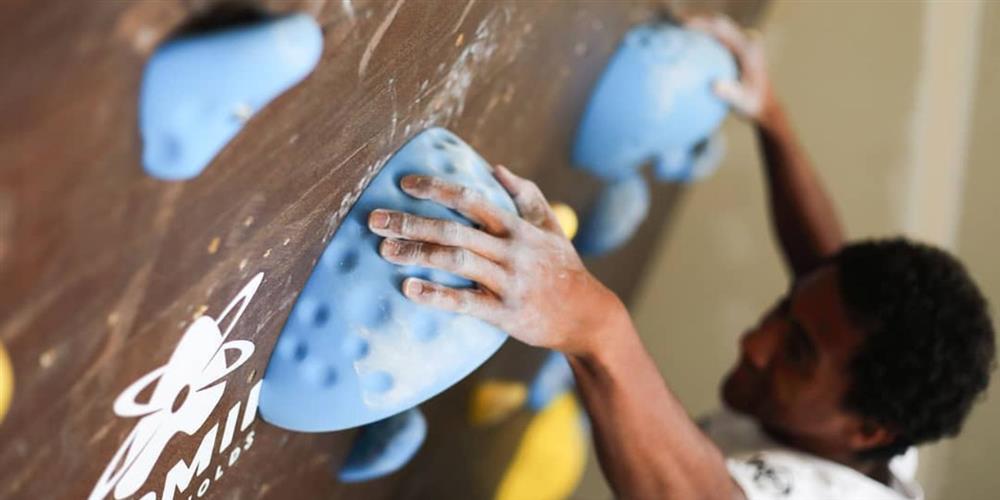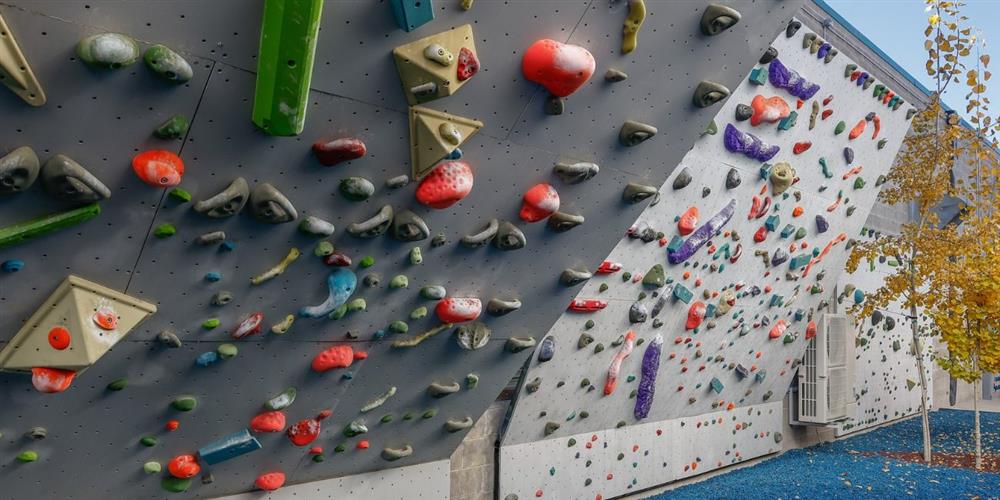Creating a climbing wall that challenges and excites climbers is an art form. One of the most crucial aspects of this art is understanding and mastering climbing wall hold density.
Whether you’re setting up a home wall or designing routes at a climbing gym, getting the hold density right can make or break the climbing experience. Keep reading to learn what you should know about climbing wall hold density and explore some tips for determining the ideal hold density and climbing routes for your rock wall.
What Climbing Wall Hold Density Means
Climbing wall hold density refers to the number of holds installed on a given section of the wall. Higher hold density means more holds per square foot, while lower hold density means fewer holds in the same space.
This concept might seem straightforward, but it has significant implications for the climbing experience. For instance, a high-density wall provides numerous options for movement, making it ideal for practicing technique and endurance. On the other hand, a low-density wall can offer a more challenging experience, requiring strategic thinking and precise movements.
The Importance of Wall Hold Density in Climbing
Hold density plays a critical role in the overall climbing experience. It affects everything from the difficulty of routes to the variety of movements and techniques you can practice. High-density walls are excellent for beginners and for those looking to build stamina, as the abundance of holds allows for continuous movement without excessive strain.
For more advanced climbers, a lower hold density can simulate outdoor climbing conditions, where holds are naturally spaced out and require more skill to navigate. This setup helps climbers develop problem-solving abilities and mental resilience. By considering these factors, you can create a climbing wall that caters to a wide range of skill levels and training objectives.

Factors To Consider When Designing Your Wall’s Hold Density
Now that you understand the significance of hold density, let’s dive into considerations for designing your wall. When deciding on the hold density for your wall, you should take into account such factors as:
- Wall size and shape: A small or oddly shaped wall may benefit from a higher hold density to maximize climbing options.
- Climbing style: Are you primarily bouldering or roped climbing? Bouldering routes typically require more holds per square foot compared to longer roped routes.
- Target audience: Consider the skill level of the climbers who will be using your wall. Beginners may appreciate a higher hold density, while experienced climbers will likely prefer a lower density for more of a challenge.
- Personal preference: Ultimately, the hold density on your wall will depend on your personal preferences and climbing goals. Experiment with different densities to find what works best for you.
Tips for Designing the Hold Density of Your Climbing Wall
Now that we’ve covered what you should know about climbing wall hold density, we’ll help you put that knowledge into practice!
Assess Your Space and Objectives
Before you start drilling in holds, take a step back and assess your climbing space and your climbing objectives. Is your wall a compact home setup or a spacious gym installation? The size and shape of your wall will heavily influence the hold density you should aim for.
For instance, smaller walls can benefit from a higher hold density to offer a variety of movement options in a limited space. On the other hand, a larger wall might allow for more creative freedom with different sections having varying densities. Define what you want to achieve with your wall, whether it’s improving technique, building endurance, or simulating outdoor climbing conditions.
Balance Variety With Challenge
Finding the sweet spot between variety and challenge is key to an engaging climbing wall. High-density walls with numerous holds can keep the climbing experience dynamic and forgiving, providing a plethora of handholds and footholds to keep you moving. This setup is fantastic for those looking to practice and perfect their techniques without constant falls.
However, too many holds can diminish the challenge, especially for advanced climbers. By strategically placing holds to create paths that demand problem-solving and precise movements, you can develop a balanced climbing experience.
Regularly Update and Experiment
The beauty of a customizable climbing wall is that it’s never set in stone—pun intended! Keep your climbing sessions fresh and exciting by regularly updating the hold arrangements and experimenting with different densities. Rotate holds to new positions or swap out holds to redefine routes and create new challenges.
Don’t hesitate to ask for feedback from friends or fellow climbers; their insights can help you refine the climbing wall to better serve diverse preferences and skill levels. Climbing is not just about physical strength but also about creativity and mental agility. So, experiment boldly and often to keep pushing the limits of your climbing wall.

Tips for Designing Climbing Routes for Your Wall
Embrace Creativity and Diversity
One of the most exciting aspects of designing climbing routes is the opportunity to get creative. Think outside the box and experiment with unconventional hold placements, unique sequences, and varied wall angles. Incorporate a mix of challenging moves, technical sequences, and fun sections to keep climbers engaged and motivated.
Variety is the spice of life, and the same is true with rock climbing. Incorporate a wide variety of hold densities and hold styles, from slopers and pinchers to roof jug climbing holds. The goal is to make every route an adventure, pushing climbers to explore new techniques and strategies.
Cater to Multiple Skill Levels
Designing routes for a wide range of abilities ensures that everyone, from beginners to seasoned climbers, can enjoy and benefit from your wall. For novice climbers, create routes with larger, more accessible holds and straightforward paths that promote confidence and basic skill development.
As for intermediate and advanced climbers, introduce routes that require more intricate footwork, balance, and problem-solving skills. Offering a variety of difficulty levels not only fosters inclusivity but also encourages climbers to gradually progress and tackle more ambitious climbs as they improve their skills.
Prioritize Safety and Accessibility
While creativity and challenge are essential, safety should always be a top priority when setting routes. Ensure that holds are securely fastened and that there are no sharp edges or loose components that could pose risks.
Properly space out difficult moves to avoid excessive strain or potential falls, and consider the placement of landing mats or crash pads to enhance safety during bouldering. By designing routes with diverse body types and abilities in mind, you create a more inclusive climbing community where everyone can participate and enjoy the climb safely.
Design Your Ideal Climbing Wall with Atomik Climbing Holds
We hope our guide helps you understand the intricacies of climbing wall hold density and route planning. Whatever hold density you plan on employing, you’ll need climbing holds for your wall, and that’s where Atomik Climbing Holds can help!
Our wide selection includes climbing holds of all shapes, sizes, and colors. Browse our inventory or contact our team of climbing hold experts to learn more.




Leave your comment